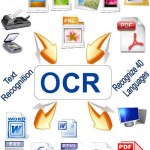The Ultimate Guide To Using Images For Marketing
Images are a powerful tool in any marketing strategy. In today’s visually-driven world, images can grab attention, convey information quickly, improve comprehension, and drive action.
Here is a detailed guide on using images to improve your marketing efforts. Let’s discuss the types of marketing images, the benefits of using images in marketing, and some tips for incorporating visuals across channels like social media, email, blogging, ecommerce sites, and more.
Whether you’re a solopreneur or an enterprise marketer, images deserve a spot in your marketing mix. Read on to learn how to make the most of visual content.
Types of Marketing Images
Here are some of the most common types of images used in marketing:
- Original Photos – Taking custom photos that represent your brand conveys authenticity. Invest in a quality camera or smartphone lens to capture compelling, on-brand images.
- Illustrations and Graphics – Illustrations, icons, and graphics visually communicate ideas and add flair.
- Stock Photos – Stock photos are pre-shot images available through paid subscriptions or free sites. For the best results, make sure to choose high-quality, professional stock photos.
- Gifs – Gifs showcase products or share funny, engaging moments. Search libraries like Giphy or use an app to make short animated gifs.
- Infographics – Infographics condense complex data into an easily digestible visual format using charts, icons, and minimal text.
- User-Generated Content – User-generated content like social posts and reviews shows real people interacting with your brand. Collect and repurpose this authentic content.
The Benefits of Using Images in Marketing
Adding visuals to your marketing content provides immense value in multiple ways. Here are some of the key reasons you should incorporate images into your promotional efforts:
Increased Memorability
One of the biggest challenges in marketing is creating content that resonates. Viewers are constantly bombarded with content and ads competing for their attention. Breaking through that noise is difficult.
Fortunately, human brains are wired to better retain visual information. Images are processed 60,000 times faster in the brain than text. Visuals also forge stronger memory connections thanks to the picture superiority effect. This cognitive phenomenon demonstrates that people remember pictures better than words alone.
Using photos, graphics, illustrations, or other visual elements will ensure your message sticks in your audience’s minds better than text-only content. Vivid images that reinforce your key points will also have a lasting impact.
Faster Communication
We live in a fast-paced, distracted world. Viewers don’t have much time or patience when consuming content. You need to convey your message quickly before they move on to something else.
Full paragraphs of text take much longer to process and comprehend. But viewers can digest the meaning behind an image in as little as 13 milliseconds. Visuals allow you to communicate critical information at a mere glance.
By incorporating photos, charts, icons, and other graphics, you can speed up how quickly your audience understands your message.
Better Engagement
Today, people have shorter attention spans. On social media, most people spend just 2-3 seconds looking at an image before scrolling past it. Articles often only get 15 seconds of attention before the reader moves on.
Compelling images entice viewers to linger longer. Articles with relevant photos receive 94% more total views than text-only content. Posts with images also see higher likes, comments, shares, and overall engagement on social media.
Visuals act like magnets for the human brain, capturing interest and encouraging deeper looks. They give people a reason to stick around.
Higher Conversion Rates
In marketing, one of our top goals is persuading audiences to take action, whether that’s downloading an ebook, registering for a webinar, or making a purchase.
Product pages that incorporate image galleries or high-quality photos can increase conversion rates by up to 60%. On ecommerce sites, the right product visuals give shoppers the confidence to click buy.
Illustrations demonstrating a complex process also improve comprehension, making users more likely to complete sign-up forms. Images make your offering and value proposition more tangible.
Enhanced Storytelling
Storytelling is an incredibly effective marketing technique for making emotional connections with your audience. Images are a useful tool to improve storytelling, making your content more vivid, compelling, and impactful.
Photographs and videos that show real people interacting with your brand tell a story. Infographics condensing data into visuals also craft compelling narratives. Images break up heavy blocks of text, improving readability.
Relevant visuals woven throughout your content keep readers engaged in your story from start to finish.
Incorporating visual content provides immense value by boosting memorability, speeding up communication, improving engagement, increasing conversions, and enhancing storytelling abilities. So make images a key part of your marketing mix and see how they benefit your business.
How to Effectively Use Images in Marketing
Follow these tips to incorporate visual content across marketing channels:
Social Media
Adhere to recommended image sizes for each network. Post visually engaging content daily. Use on-brand graphics and photos for your profile and cover images.
Email Marketing
Include a banner image at the top to capture attention. Break up text-heavy sections with relevant photos and illustrations. Limit large images to improve load times.
Blog Posts
Feature images should represent the post topic. Break up every 300 words of text with charts, photos, or graphics. Maintain image quality when resizing for mobile.
Websites
Hero images should convey brand identity on homepages. Product pages need quality photos and videos. Optimize site speed by compressing large images.
Paid Ads
Use high-quality, eye-catching images relevant to your business and audience. Test different visuals and copy to optimize performance.
Ecommerce Product Listings
Showcase products with multiple high-resolution photos taken against white backgrounds. Allow zooming and use lifestyle imagery in galleries.
Packaging and Print Materials
Print catalogs, flyers, and brochures come to life with quality images. You can use your packaging to showcase your product with images that represent your brand and values.
Conclusion
Incorporating visual content in your marketing and advertising boosts performance across metrics. Images grab attention, speed up comprehension, improve storytelling, and persuade audiences. With the rise of visual platforms like Instagram and Pinterest, images are now an essential component of any marketing strategy.
Follow the tips outlined here to incorporate images across social media, email, blogging, ecommerce sites, and more. Invest time in creating and collecting quality, relevant visuals aligned to your brand and audience. Thoughtfully adding images to amplify your messaging will elevate your marketing results and bring in sales.
Cover Image source







![How to Hide Your House From Google Maps [Infographic]](https://technofaq.org/wp-content/uploads/2018/08/How-to-Hide-Your-House-from-Google-Maps-IG-2-150x150.jpg)








